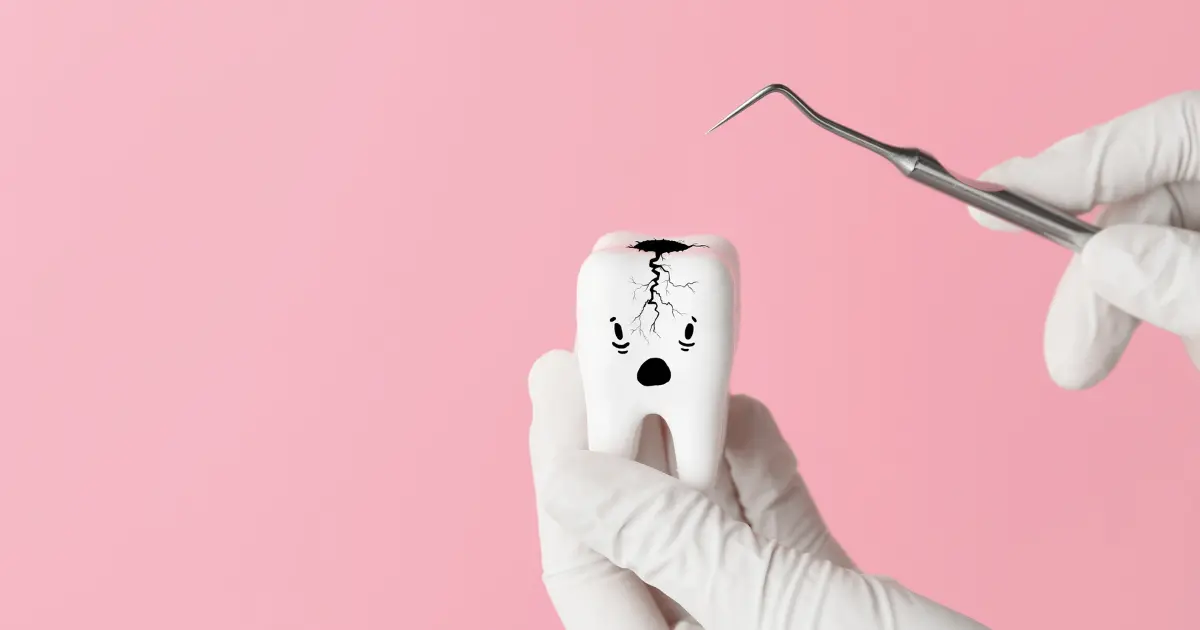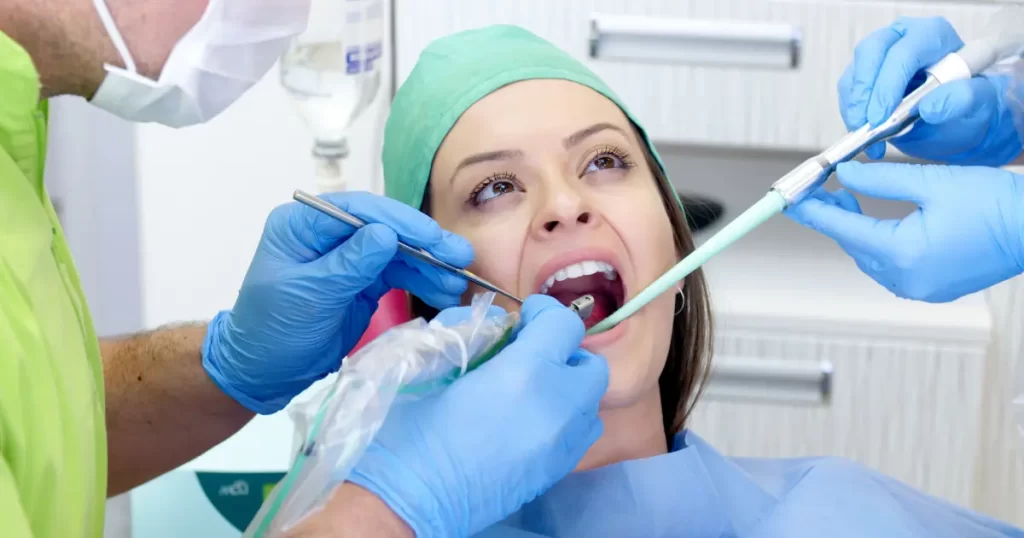Hairline cracks in teeth refers to teeth that have microscopic fissures or fractures. The crack’s severity might vary. It might begin as a minor, painless cavity and develop to the point where the tooth splits in half. Treatment choices rely on variables such as the size and severity of the fracture. Also, the extent to which it spreads to the gum line and its placement in the mouth is important. Small fissures might not need treatment.
What Causes Hairline Cracks in Teeth?

There are many things that can cause a small crack or a bigger break in a tooth. The more wear and tear your teeth have been through, the more likely you are to get cracks in them as you get older. Often, more than one of the following has happened, and more than once over the course of years:
- Biting and chewing on hard objects, food, and ice
- Gritting and clenching your teethIrregular pressure when chewing
- Both upper and lower teeth rub against each other
- A large cavity or filling in the tooth may harm a tooth. In that situation, normal chewing power can cause damage to its structure.
Most fractures in tooth enamel are straight and so small that people don’t notice them. You might have a small vertical crack that you can’t see with the naked eye. It might not show up on an X-ray at all. You might not know about it unless it hurts.
There are several types of cracks that can occur in a tooth. Some of those are:
- Craze lines: These cracks are small and typically benign. They only impact the outer layer of the tooth’s enamel.
- Cracked tooth: It extends from the chewing surface of the tooth toward the root. And also is a more severe type of crack. It can cause pain when chewing and may need a crown or root canal treatment.
- Fractured cusp: This occurs when a small piece of the tooth’s chewing surface breaks off. It usually doesn’t cause pain and filling can fix it.
- Vertical root fracture: This crack starts at the root of the tooth. It extends upwards of the chewing surface. It often causes pain and may need the tooth to be extracted.
- Split tooth: It occurs when a cracked tooth is left untreated. The crack extends to the root. Thus, it cause the tooth to split into two or more pieces. This type of crack often requires extraction.
Are Hairline Cracks in Teeth Normal?

It’s natural for adults to get frenzy lines from regular biting and chewing over time. The outer and inner enamel of the tooth is a tough substance. So, the hairline cracks in the tooth do not cause a risk of harm to your tooth. In certain situations, the fissures will be so deep and broad that tooth rot will form around them.
An asymptomatic crack is one that goes through the outer enamel and into the dentin or dental nerve. You may feel discomfort or sensitivity while chewing, biting, or eating hot and cold foods. Fractures in the enamel are asymptomatic. Craze lines are usually painless and harmless. However, if a crack spreads or becomes painful, you should see your dentist straight.
Can Dentists Fix Hairline Cracks in Tooth?

Do you want to know how dentists fix a cracked tooth? When a person’s tooth fractures, it can cause mild to severe pain. Cracked teeth can also cause an oral infection, which can spread to other parts of the body. Because of this risk, it is critical to seek treatment from a dentist. It is critical to understand what can cause a cracked tooth. Once a person knows how teeth fracture, they may take the necessary steps to avoid cracking. Also, the etiology of the fracture might aid in determining the best method of therapy.
Chewing on hard items, clenching one’s teeth, and having weak teeth are some of the reasons for a hairline fracture in teeth. The partial loss of tooth, massive fillings, and root canal therapy causes weak teeth. Dentists can give patients broken tooth repair procedures to regain oral health. Contact us now to learn more about treating and repairing a damaged tooth.
What Methods Are Used to Repair Hairline Cracks in Tooth?

Consult a dentist for avoiding nerve damage and abscess formation in the tooth. A dental health specialist will treat the tooth based on the extent of the damage. Dentists treat hairline cracks in teeth with a variety of methods. They are as follows:
- Dental Contouring: A fractured tooth is polished and rounded as part of the cosmetic contouring process.
- Dental Bonding: Bonding is the process of filling a tooth fracture with resin. To restore the contour of a tooth, it often fixes minor chips off the biting edge.
- Root Canal Treatment: Dentists apply root canal therapy when a break extends to the pulp. The removal of damaged pulp avoids future tooth deterioration.
- Dental Veneer: Dentists use veneers when to support the tooth remains. It entails applying a thin layer of porcelain or plastic to the front of a damaged tooth.
- Dental Crown: Crowning is the process of covering a fractured tooth with a porcelain or ceramic crown. When there isn’t enough support for veneers, this is an option.
If the damage from the fracture is serious, a dentist proposes tooth extraction. This is the most effective technique to remove a fracture and associated problems. A little tooth fracture can mend over time, but only if the damage is minor. It recovers through the remineralization process. A hairline tooth fracture may usually heal on its own if it occurs on the outer enamel. Unless the fracture is severe, hairline cracks in teeth is usually painless.






